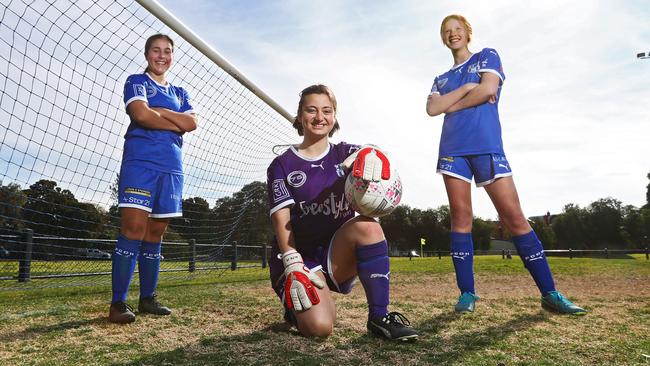Football Federation Victoria launches fight for share of space
Every year, hundreds of kids in Victoria are turned away from playing soccer because local clubs can’t cope with the numbers.

Every year, hundreds of kids in Victoria are turned away from playing soccer because local clubs can’t cope with the numbers.
Whereas sports such as Australian football, cricket, rugby league and rugby union are constantly advertising for new registrations, many soccer clubs are reluctant to follow suit because of the lack of grounds and facilities.
The ever-increasing senior and junior registrations for men and boys, and women and girls, simply can’t keep up with the population growth as the two sectors vie for a decreasing amount of space and facilities, especially in the inner city.
The competition for the shrinking space will only get worse by the mid-2020s.
But Football Federation Victoria hopes to go some of the way to addressing the challenges when it launches the State Football Facilities Strategy to 2026 today.
Victorian Sports Minister John Eren, 12 mayors, representatives from another 26 councils, Football Federation Australia representatives and club officials from the junior and senior ranks will attend the launch at AAMI Park.
The brainchild of FFV chief executive Peter Filopoulos (former CEO of A-League club Perth Glory), the strategy outlines FFV’s plan to work hand-in-hand with local communities and government to upgrade local football facilities across the state and ensure they can meet the demands of Australia’s fastest growing club-based participation sport.
Filopoulos said the plan is “bold, exciting and innovative” and is needed “given that data suggests this year that a big number of boys and girls were knocked back because clubs couldn’t accept more registrations based on capacity”.
“It’s well known football is the No 1 participation sport in the country,” Filopoulos said. “But sadly, every day we hear another story of how our clubs across the state don’t have the facilities to keep up with this growth and end up knocking back people who want to play. And that is damning.
“The launch of our facilities plan is about developing a pathway forward for these local football communities so we can ensure everybody — no matter age, background, gender or ability — can be involved in the game they love.
“The strong growth of our game has led to saturation point in regards to facilities. That growth is particularly strong in the girls’ and women’s game and we are at a crucial juncture if we are to capitalise on the opportunities ahead.”
Filopoulos, who has only been in the job with FFV for four months, said the strategy sets out a number of key priorities.
“Based on the population growth and participation increases that we expect by 2026, we will need up to 420 full-size equivalent pitches, upgrades to existing pitches such as making them synthetic, floodlighting so we can increase game capacity as well as gender equity change rooms,” he said.
“We want to bring lighting to 96 pitches, provide 31 synthetic pitches, identify 145 new pitches, 80 in schools, provide drainage and 58 pavilions. We also want to build a state football centre where we can house up to 100 administrative staff.”
Filopoulos said there needs to be thinking outside the square.
“We have been speaking with clubs, talking to local and state governments and we are prepared to be innovative,” he told The Australian. “We have talked to councils that are inner-city landlocked about new developments having football pitches on rooftops.”
Filopoulos wouldn’t put a figure on what it will all cost.
“Money has already been put into the World Game Facilities fund,” he said. “It has been fantastic for the community and a big success to date but the next five years are critical for clubs and the councils to get the work up and running.”
Michael Tyrikos, president of FC Clifton Hills, said his club is one that has had to turn kids away.
“Good facilities are hard to come by,” Tyrikos said.
“It’s sad because we have to turn away many players each year because we just don’t have the space or the appropriate facilities.
“It’s particularly hard given we want to attract more women and girls to our clubs. I know many clubs are in the same situation.”



To join the conversation, please log in. Don't have an account? Register
Join the conversation, you are commenting as Logout